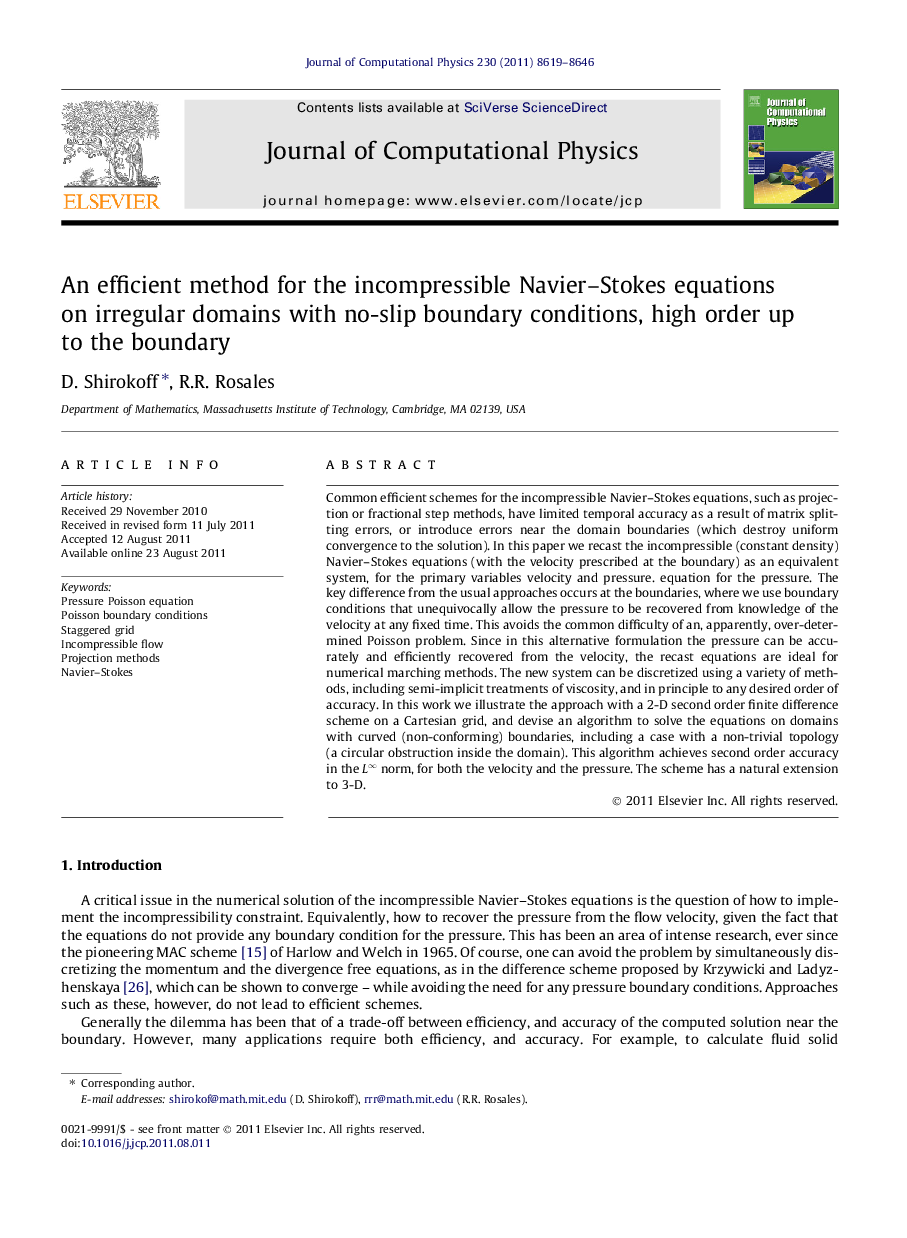| Article ID | Journal | Published Year | Pages | File Type |
|---|---|---|---|---|
| 518998 | Journal of Computational Physics | 2011 | 28 Pages |
Common efficient schemes for the incompressible Navier–Stokes equations, such as projection or fractional step methods, have limited temporal accuracy as a result of matrix splitting errors, or introduce errors near the domain boundaries (which destroy uniform convergence to the solution). In this paper we recast the incompressible (constant density) Navier–Stokes equations (with the velocity prescribed at the boundary) as an equivalent system, for the primary variables velocity and pressure. equation for the pressure. The key difference from the usual approaches occurs at the boundaries, where we use boundary conditions that unequivocally allow the pressure to be recovered from knowledge of the velocity at any fixed time. This avoids the common difficulty of an, apparently, over-determined Poisson problem. Since in this alternative formulation the pressure can be accurately and efficiently recovered from the velocity, the recast equations are ideal for numerical marching methods. The new system can be discretized using a variety of methods, including semi-implicit treatments of viscosity, and in principle to any desired order of accuracy. In this work we illustrate the approach with a 2-D second order finite difference scheme on a Cartesian grid, and devise an algorithm to solve the equations on domains with curved (non-conforming) boundaries, including a case with a non-trivial topology (a circular obstruction inside the domain). This algorithm achieves second order accuracy in the L∞ norm, for both the velocity and the pressure. The scheme has a natural extension to 3-D.
